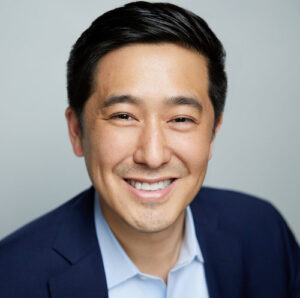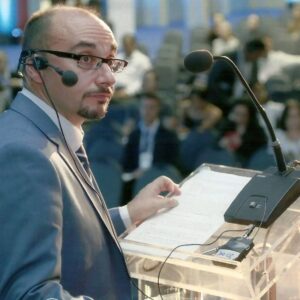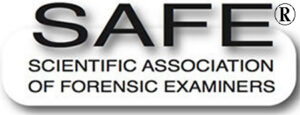 The 2022 SAFE International conference is being held this year on Friday August 26 And September 30. In Asia, Australia and New Zealand this is August 27 and October 1.
The 2022 SAFE International conference is being held this year on Friday August 26 And September 30. In Asia, Australia and New Zealand this is August 27 and October 1.
 Attendance at the conference is valuable to accrue points toward Certified Forensic Document Examiner (CFDE) application and certification renewal.
Attendance at the conference is valuable to accrue points toward Certified Forensic Document Examiner (CFDE) application and certification renewal.
Register Here for the 2022 SAFE conference
August 26 Speakers
Time: 9:00 a.m. – 1:00 p.m. Pacific time
Speaker: Gerald M. LaPorte, B Sc., B.Comm., M.S.F.S
Topic: How Chemical Examinations of Inks and Paper Can Corroborate and Supplement Forensic Document Examinations
Bio:
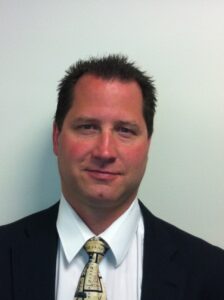 Mr. LaPorte is a Forensic Chemist and Document Dating Specialist with Riley Welch LaPorte & Associates Forensic Laboratories. He is also the Director of Research Innovation at the Global Forensic and Justice Center (GFJC), a pre-eminent program of Florida International University (FIU). Mr. LaPorte has been employed in various capacities in the forensic sciences since 1993, including the Director of the Office of Investigative and Forensic Sciences at the National Institute of Justice and Chief Research Forensic Chemist at the United States Secret Service. He was the co-chair of the Standards Practices and Protocols Interagency Working Group, under the Office of Science and Technology Policy within the Executive Office of the President of the United States. Mr. LaPorte was selected by the Attorney General of the United States to serve as a Commissioner on the National Commission on Forensic Science. Mr. LaPorte also served as the Chairperson of the Forensic Document Examination Subcommittee on the Organization of Scientific Area Committees (OSAC) for Forensic Science, which works to strengthen the nation’s use of forensic science by facilitating the development of technically sound forensic science standards. He has authored numerous publications, including chapters in three forensic science text books, and has testified as an expert witness in International and U.S. Courts over 125 times.
Mr. LaPorte is a Forensic Chemist and Document Dating Specialist with Riley Welch LaPorte & Associates Forensic Laboratories. He is also the Director of Research Innovation at the Global Forensic and Justice Center (GFJC), a pre-eminent program of Florida International University (FIU). Mr. LaPorte has been employed in various capacities in the forensic sciences since 1993, including the Director of the Office of Investigative and Forensic Sciences at the National Institute of Justice and Chief Research Forensic Chemist at the United States Secret Service. He was the co-chair of the Standards Practices and Protocols Interagency Working Group, under the Office of Science and Technology Policy within the Executive Office of the President of the United States. Mr. LaPorte was selected by the Attorney General of the United States to serve as a Commissioner on the National Commission on Forensic Science. Mr. LaPorte also served as the Chairperson of the Forensic Document Examination Subcommittee on the Organization of Scientific Area Committees (OSAC) for Forensic Science, which works to strengthen the nation’s use of forensic science by facilitating the development of technically sound forensic science standards. He has authored numerous publications, including chapters in three forensic science text books, and has testified as an expert witness in International and U.S. Courts over 125 times.
Abstract
Often times, the forensic examination of documents requires a comprehensive suite of testing to provide the most information possible regarding how and when a document was created and if a document is authentic with respect to the purported date of preparation. The purpose of this workshop is to provide attendees with a background in how chemical examinations can be used to corroborate and supplement a host of forensic document examinations such as:
i) ink and paper comparisons;
ii) indentation and impression results including sequencing of impressions;
iii) determining whether multiple documents dated over a course of time were prepared contemporaneously
iv) results from video spectral analysis or hyperspectral imaging
v) interpretation of alterations and obliterations; vi) printing process determination
vii) to potentially corroborate qualified handwriting conclusions.
Attendees will be introduced to the general concepts of thin layer chromatography (TLC), gas chromatography/mass spectrometry (GC/MS), and other analytical methods to understand their application to forensic document examination and the limitations of the testing. Participants will also be introduced to the basic concepts of color and light theory as it applies to video spectral analysis and certain imaging techniques. A major portion of this session will include a discussion and analysis of questioned documents from adjudicated cases. The workshop participants are not required to have a background in chemistry since the main objective is to provide an overview and understanding of how chemical methods can help to elucidate some background about the materials used to compose a document such as writing inks, printing inks, paper, and other materials that could be used to alter or artificially age a document.
1:30 – 2:30 p.m. Pacific time
Speaker: Stephen Lee, Esq.
Topic: Sherlock Holmes Advice for Investigators
Bio:
Stephen Lee was a federal prosecutor in Chicago for 11 years, a reporter for the Chicago Tribune, and a partner at a mid-sized firm. He is now a solo practitioner focusing on health care fraud defense and data analytics in complex litigation. He is a graduate of Yale College and Columbia Law School.
Mr. Lee practices in Chicago, is a former Assistant United States Attorney, former Chicago Tribune reporter, and board member of the FBA Chicago Chapter. He is a member of the New York, Illinois and California bars
Abstract
In the stories by Sir Arthur Conan Doyle, Sherlock Holmes provided lots of advice for investigators and talked about his plans to write “a text-book which shall focus the whole art of detection into one volume.” He never got around to doing this, but former federal prosecutor Stephen Lee will discuss practical lessons for real-life investigators from the stories, including a discussion of how Sherlock Holmes used forensic document analysis in several stories.
Register Here for the 2022 SAFE conference
Speakers for September 30, 2022
9:00 – 10:00 a.m. Pacific time
Speaker: Manel de Vicente
Topic: NEGA software
Bio:
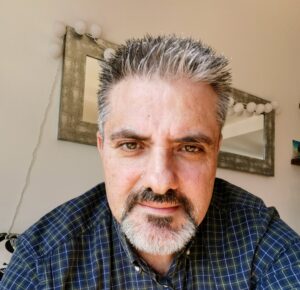 Manel de Vicente is a senior industrial electronics engineer, my specialty is microprocessor board design, and programming systems, I have worked in different industrial sectors, but currently I’m only focused on forensic software design, in my start-up MacWinLin CPS since 2010, and I also participate in software projects, for other external engineering companies.
Manel de Vicente is a senior industrial electronics engineer, my specialty is microprocessor board design, and programming systems, I have worked in different industrial sectors, but currently I’m only focused on forensic software design, in my start-up MacWinLin CPS since 2010, and I also participate in software projects, for other external engineering companies.
Currently at MacWinLin CPS, I’m developing two products:
NEGA® is a forensic software, it is like an X-ray light viewer box used to visualize medical X-rays, but digital, with the advantages that this implies, it is specially designed for handwriting experts, experts in signatures and questioned documents. Many of its analysis tools can be very useful for other sectors such as criminology, ballistics, medicine…
ISA (Intelligent Spatter Analysis) ® is a forensic software that calculates the area of origin, by analyzing blood patterns -BPA- projected on the surface, is a novelty in the sector that the scene works in a 3D environment simple and intuitive to use, displaying the new analysis in real time, is specially designed for Forensic Experts in Crime Scene Investigation.
Abstract:
– NEGA software and its usefulness.
– Zoom HQ tool enlarges the image without pixilation.
– Color filters tools, to see if signature is over printed text and other things.
– SVF filter to detect step sequence on a stroke crossing.
– Measurements and Calibration with visual pattern.
– Comparison with independent control on each image, and special filters. NEGA internal operation for this.
– Tools to measure the signature proportionality, FDM (Fibonacci Digital Modeller) and SPP (Signature Phase Proportions).
– AOT (Analysis Oval Text) tool to measure the ovals proportionality in the handwriting letters or numbers.
10:10 – 11:10 a.m. Pacific time
Speaker: Prof. Pàvlos G. Kipouràs
Topic: ‘Why two signatures are never identical in Practice: Evidence and Scientific Explanation‘
Bio:
Pàvlos Kipouràs was born in Athens, Greece in 1973. Graduate of Law School in ‘Dimokriteion University of Thrace” in Greece in 1996. Graduate of Judicial Graphology in “Università degli Studi di Urbino ‘Carlo Bo’” of Italy in 2000. MSc of Graphological Expertise & Professional Consultancy in “Università degli studi di Urbino ‘Carlo Bo’” in 2006, Graduate in Graphological Techniques Università degli studi di Urbino ‘Carlo Bo’ of Italy in 2008. PhD “Judicial Graphology as an Expertise” Dimokriteion University of Thrace, Greece 2009. Diploma of Specialization in Criminalistic Graphology “Università Pegaso” of Italy in 2013. Grad. in Graphometric signatures Centro Studi Grafologici (CeSGraf), Italy, 2020. He is an Attorney at Law since 1998, Document Examiner/Judicial Graphologist since 2001 and Professional Graphologist since 2006.
Advisor of the «State Commitee of Cinematography» of the Greek Ministry of Civilization since 2012. Prof of “History of the Greek Writing” of “Pegaso University” of Italy (2015-2016), Prof of “History of the Greek Writing” and “Elements of Greek Writing” of the “Scuola Forense di Grafologia” (SFG) of Naples, Italy (2016-2021) and Prof of “Graphopathology in Greek Writing” of “Scuola di Grafopatologia Forense” (SGF) (2018-2021) of Naples, Italy.
Specialist in Graphometric signatures (2020) and Senior Researcher of South Ural State University of Russia since 09/2020. Member of the Athens Bar Association of Lawyers, ΠΕΔΙΚΓΡΑΦ (Greek Association of Document Examiners), Associazione Grafologica Italiana (AGI), CIGMe (Centro Internazionale di Grafologia Medica), Slovak Graphological Society, CeSGraf (Centro Studi Grafologici), AGRAGI (Associazione Grafologica Giudiziaria), Associazione Nazionale Grafologi Forensi ed Esperti Documentali (Anigrafed), Associazione Grafologi Professionisti (APG) and Scientific Association of Forensic Examiners (SAFE).
Interested in research in graphometric signatures, speaker in 48 international conferences and seminars throughout world (from Brazil to China), author of articles and author of the book “Judicial Graphology as an Expertise” published in 2009 in Greece (Ed. Ant.N.Sakkoulas). Editorial member of International Journal of Law in Changing World (IJLCW) and of Journal of Digital Technologies and Law (JDTL).
Abstract
Empirical evidence that two genuine signatures are never identical in practice has been available for more than 120 years, but a scientific explanation for this phenomenon is lacking. The authors present a detailed explanation based on the latest research in biomedical sciences, identifying four reasons:
1) The “strokes” of each signature last 1/10 of a second, while the visual reaction time in humans requires at least 2/10 of a second, so the “strokes” cannot be corrected by visual feedback.
2) Each time a signature is written, different motor units of the corresponding muscles are quasi-randomly activated, resulting in slightly different movements and thus a non-identical signature.
3) In writing a signature, muscles of the forearm and the rest of the upper limb are used, which are less controllable from the motor cortex than the intrinsic muscles of the hand.
4) It is implied by electromyogram (EMG) studies and kinesiology that a unique sequence of muscle movements is required to produce a specific signature or handwriting, so if a person tries to repeat the same movement, the two actions will never be identical. In addition to the above, people usually sign “by heart” without seeing a model of their signature, using their “muscular memory”, thus producing non-identical signatures.
11:20a.m.- 12:20 p.m. Pacific time
Speaker: Adele Quigley-McBride
Topic: An Ounce of Prevention: A Simple and Practical Tool for Mitigating Cognitive Bias in Forensic Decisions
Bio:
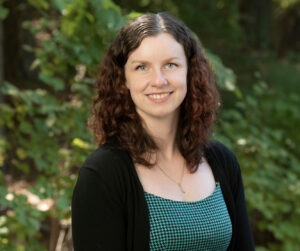 Adele Quigley-McBride received a Bachelor of Science in Psychology and a Bachelor of Laws from Victoria University of Wellington in 2014. After receiving a Fulbright Science and Innovation Award, she began her doctoral studies with Prof. Gary Wells at Iowa State University in 2015. Adele graduated with her PhD in July of 2020 and is now a postdoctoral researcher with Prof. Brandon Garrett at the Wilson Center for Science and Justice at Duke Law. Her work focusses on judgment and decision-making processes in legal contexts including prosecutorial discretion, eyewitness identification, juror decision-making, and forensic testing procedures. She is also Vice-Chair of the Human Factors Task Group of OSAC (Organization of Scientific Area Committees for Forensic Science) and is a member of the “Latent Print Analysis” and “Implementation and Practice”, and “Training and Education” groups funded by CSAFE (the Center for Statistics and Applications in Forensic Evidence).
Adele Quigley-McBride received a Bachelor of Science in Psychology and a Bachelor of Laws from Victoria University of Wellington in 2014. After receiving a Fulbright Science and Innovation Award, she began her doctoral studies with Prof. Gary Wells at Iowa State University in 2015. Adele graduated with her PhD in July of 2020 and is now a postdoctoral researcher with Prof. Brandon Garrett at the Wilson Center for Science and Justice at Duke Law. Her work focusses on judgment and decision-making processes in legal contexts including prosecutorial discretion, eyewitness identification, juror decision-making, and forensic testing procedures. She is also Vice-Chair of the Human Factors Task Group of OSAC (Organization of Scientific Area Committees for Forensic Science) and is a member of the “Latent Print Analysis” and “Implementation and Practice”, and “Training and Education” groups funded by CSAFE (the Center for Statistics and Applications in Forensic Evidence).
Abstract:
Forensic analysts receive information from a multitude of sources. Some of the information analysts receive is directly relevant to their task (e.g., trace evidence from crime scenes), some information available to them might be only tangentially related (e.g., where the trace was found at the scene), and other information might be totally irrelevant and potentially biasing (e.g., the suspect’s race or criminal history; Gardner et al., 2019). Cognitive bias—the effect that suggestive information has on decisions—occurs when preexisting beliefs, expectations, motives, or the situational context influences how people collect, perceive, or interpret information (Kassin, et al., 2013; Spellman et al., 2021). Standardized information management frameworks can help analysts manage the effect of that information. Linear Sequential Unmasking – Expanded (LSU-E; Dror & Kukucka, 2021) is an example of such a framework and emphasizes the need to consider the relevance, objectivity, and biasing power of information available to analysts and identify situations where additional precautions are necessary. LSU was first proposed almost a decade ago, however, and laboratories have been slow to adopt this approach, perhaps due to a lack of practical, concrete guidance from researchers. A free toolkit was recently published (Quigley-McBride et al., 2022) that bridges the gap between the LSU-E theoretical framework and forensic practice and can be used as a cognitive bias training exercise or incorporated into analysts’ workflow to help prevent cognitive bias. Participants in this session will learn how to use the LSU-E worksheet and the training materials, and what the benefits of this toolkit are.und information:
1:00 – 2:00 Pacific time
Speaker: Jonathan W. Hak, K.C.
Topic: Courtroom Testimony for Expert Witnesses
Bio:
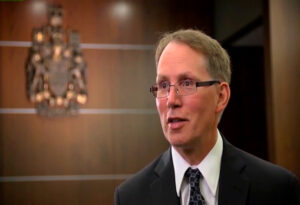 Jonathan W. Hak, K.C. is a barrister and solicitor, international imagery law lecturer, adjunct associate law professor, and PhD Candidate. He was a Crown Prosecutor with the Alberta Crown Prosecution Service for over 30 years and has extensive experience leading and challenging expert evidence in the courtroom. Jonathan has been teaching law through all of his legal career, teaching extensively in Canada, US, UK, Hong Kong, and Singapore. Since 2006, he has taught Courtroom Testimony for Expert Witnesses to a broad array of experts from across North America and beyond. He obtained his formal legal education in Canada (MRU, UBC), the United States (Cal State), and the United Kingdom (Cambridge). He is currently a PhD Candidate in the Faculty of Law at Leiden University in the Netherlands where he is focusing on the use of non-textual evidence in international criminal prosecutions for atrocity crimes.
Jonathan W. Hak, K.C. is a barrister and solicitor, international imagery law lecturer, adjunct associate law professor, and PhD Candidate. He was a Crown Prosecutor with the Alberta Crown Prosecution Service for over 30 years and has extensive experience leading and challenging expert evidence in the courtroom. Jonathan has been teaching law through all of his legal career, teaching extensively in Canada, US, UK, Hong Kong, and Singapore. Since 2006, he has taught Courtroom Testimony for Expert Witnesses to a broad array of experts from across North America and beyond. He obtained his formal legal education in Canada (MRU, UBC), the United States (Cal State), and the United Kingdom (Cambridge). He is currently a PhD Candidate in the Faculty of Law at Leiden University in the Netherlands where he is focusing on the use of non-textual evidence in international criminal prosecutions for atrocity crimes.
Abstract:
Becoming an expert in a particular field of expertise is a significant accomplishment because it means that through substantial education, training, and experience, you have acquired a level of targeted knowledge that is superior to that of the trier of fact, and you are able to assist in the search for the truth. Becoming an effective expert witness is an entirely different endeavor that requires a multifaceted skill set. If an expert witness is not able to perform well in the pressurized environment of the courtroom, there will be a disconnect between what the expert has to offer and what is delivered in the courtroom.
Courtroom Testimony for Expert Witnesses is a subject that covers a variety of topics focused not only on witness stand performance but many preparatory steps leading up to the courthouse. Relevant topics include drafting expert reports; the importance of peer review; developing an informative expert curriculum vitae; trial procedure; the process of being qualified as an expert witness in the courtroom; expert witness bias; the various roles of an expert witness; effectively communicating your evidence during direct examination; learning strategies that will assist with understanding, surviving, and even profiting from cross examination; responding to the pressure to change your opinion; the expanded role of an expert when there is an opposing expert; and more.
The Courtroom Testimony for Expert Witnesses course is a dynamic three-day course that incorporates lectures, demonstrations, and moot courts based on submitted expert reports. This informative one-hour introductory presentation will provide a broad overview on selected topics related to expert witness testimony. There will also be an opportunity for Q&A.
2:10 – 3:10 Pacific Time
Speaker: Doug Cobb
Topic: ScanRiteSM Paper ID Technology and the identification of substituted sheets in questioned documents.
Bio:
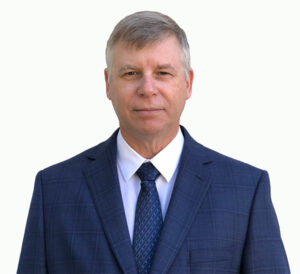 Doug Cobb is a Paper Scientist and Document Security Expert with over 29 years of professional experience, fourteen as a Forensic Document Examiner. He specializes in the investigation and analysis of forged or altered documents, specifically where there is suspicion that sections were inserted, modified, or copied and pasted from other sources. He has developed unique paper solutions for companies such as Hewlett Packard, Xerox, Canon, McDonald’s, and Deluxe Check. Through this experience as a Paper Scientist, he has developed new science-based methodologies to eliminate document fraud and improve document security, including processes to determine if questioned documents come from the same source or paper. He has developed two patent pending technologies for advancements in forensic document examination and legal document security, ScanRite Paper ID Technology and SecureDoc-DNA. Doug earned his Bachelor of Science degree in Forest Products, with a specialization in Paper Science and Engineering from the University of Minnesota. He is a frequent invited speaker at professional organizations for document examiners and handwriting experts, including training sessions on topics of paper and print characteristics, and legal document security. He is an active member of SAFE, the Scientific Association of Forensic Examiners and ACFE, the Association of Certified Fraud Examiners.
Doug Cobb is a Paper Scientist and Document Security Expert with over 29 years of professional experience, fourteen as a Forensic Document Examiner. He specializes in the investigation and analysis of forged or altered documents, specifically where there is suspicion that sections were inserted, modified, or copied and pasted from other sources. He has developed unique paper solutions for companies such as Hewlett Packard, Xerox, Canon, McDonald’s, and Deluxe Check. Through this experience as a Paper Scientist, he has developed new science-based methodologies to eliminate document fraud and improve document security, including processes to determine if questioned documents come from the same source or paper. He has developed two patent pending technologies for advancements in forensic document examination and legal document security, ScanRite Paper ID Technology and SecureDoc-DNA. Doug earned his Bachelor of Science degree in Forest Products, with a specialization in Paper Science and Engineering from the University of Minnesota. He is a frequent invited speaker at professional organizations for document examiners and handwriting experts, including training sessions on topics of paper and print characteristics, and legal document security. He is an active member of SAFE, the Scientific Association of Forensic Examiners and ACFE, the Association of Certified Fraud Examiners.
Abstract:
Identifying and verifying a substituted sheet in legal documents has long plagued forensic document examiners. While many examiners have tried using various methods, including UV lights and microscopy to try to determine if a sheet is different from the rest, a portable, accurate and repeatable scientific method has not been readily available. One problem is that the human eye has limitations when distinguishing differences in color. Human factors such as color memory loss, eye fatigue, color blindness and even viewing conditions effect the ability for each of us to see colors the same. The human eye can’t equally detect subtle differences in hue (red, green, blue), chroma (color saturation), or lightness and darkness.
Each paper machine produces paper grades that have a unique chemical “fingerprint”, based on its chemical composition. Its chemical composition gives it a unique set of reflected optical properties. ScanRiteSM Paper ID Technology is a scientific methodology can identify and segregate these properties. Statistical analysis of the data provides scientific evidence of whether a questioned document contains paper from the same manufactured source, making the identification of substituted sheets possible.
Doug will cover the following topics and background information:
- Color Theory
- Color Measurement Systems
- CIE L*a*b* Color Space
- Whiteness & Yellowness of Paper
- Chemistries in Paper
- Research & Case Studies

